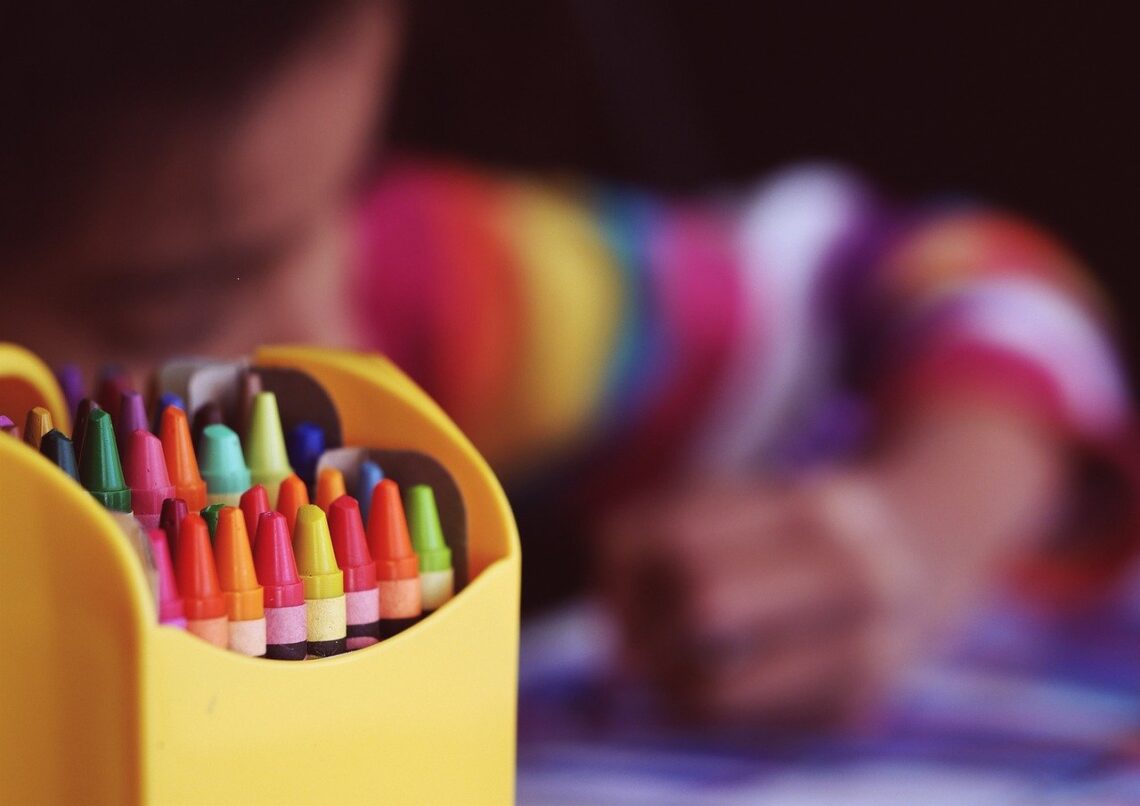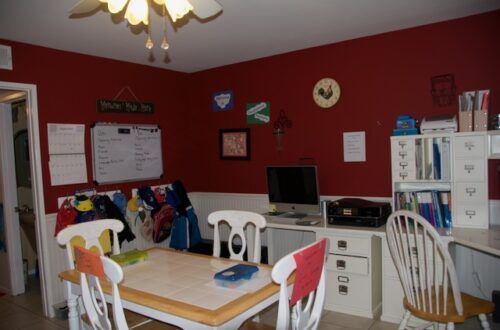
Student to Teacher Ratio- Our One Big Reason For Schooling at Home
What was our one big reason for choosing to school at home? It was definitely a small student-teacher ratio! 1:2 (in our case) was a great ratio, one that we were convinced would make a difference in our children’s education.
Why We Chose Virtual School
We have been virtual schooling with our kids for the last 13 years. Our oldest son will graduate this year from CAVA-Los Angeles, and it has been quite a wonderful journey. Our younger son is in 10th grade this year. It is hard to believe that my time as a virtual school parent is coming to a close. It has not always been easy, but it has been a great choice for our family.
One of the biggest reasons we chose to school at home is the student to teacher ratio. Today I’m going to walk you through the decision making process that our family went through when we made the choice to homeschool. I recognize that many of you are doing virtual school because there is no other choice this year. However, I hope that in my writing I can help encourage you that this could be an excellent long term choice for you and your family!
As our oldest son approached Kindergarten, Dave and I began to have a lot of deliberate discussions about our educational choices for him. We had assumed that we would put him in public school, and in fact we had moved to a city which is known for having excellent public schools. So why did we keep our kids home with such excellent schools available? Seems like an odd choice, doesn’t it?
My Teaching Background
I am a big advocate for high quality public education! In fact, I got my degree in music education, and taught in the schools for three years before deciding to stay at home with the kids. I have the utmost respect for the educators who work tirelessly in the classroom, virtual or in person, to help students learn.
So, why did we end up deciding to keep our kids at home and school them virtually?
As we continued to talk, we debated the efficiency of the 20:1 or 30:1 student to teacher ratio. As musicians, we know that private music instruction is the gold standard for improvement in your chosen instrument. When there is a 1:1 ratio, the instruction is customized to the student’s specific needs.
As a private music teacher, no lesson was ever the same with my students. I might have a student who was technically very strong and could play all the notes correctly, but lacked the ability to perform the piece expressively. Or I might have a student who was struggling with her confidence, and as a result would play her songs too quietly. Whatever the individual challenge was, I could adjust quickly because she was my only student.
As a musician, we played in ensembles as well. Those offered us the opportunity to work collectively to produce something much larger than ourselves. There is great value in that sense of community. In fact, Dave and I met in the UCLA Marching Band! We knew that we couldn’t completely isolate our children from the larger world.
But, we kept coming back to the idea that a private teacher is able to adjust and accommodate students who are struggling as well as offer enrichment opportunities to advanced students. When there are fewer students, the learning can be customized.
When you are homeschooling, your teaching focuses on the learning outcomes of a fewer students. That means once you know how your child learns, you can teach in the most efficient way possible. Does your child learn by writing? Great, then that should be how he studies. Do you have a kinesthetic learner? Then look for a curriculum which focuses on hands on learning. Do you have a child who loves to listen? Then read aloud curriculums and audio books will be just the ticket.
Classroom Management 101
One of the things that I learned in my teacher education training is that teachers need to make sure their classroom instruction enables students of all learning styles to achieve. Lesson content is delivered in multiple ways so that the classroom of students can learn in their preferred method. Additionally, teachers will work hard to be inclusive of all students, including students who are learning English as a Second Language, students who may have learning challenges, as well as the advanced and gifted learners. This is one of the many reasons it can take a full period for a classroom teacher to move through a lesson. There are so many ways that she is working to ensure that every child is learning.
When I was an instrumental music teacher, I remember moving through my ensembles, correcting hand positions. I would teach the concept, but then need to walk around to make sure that each child understood. I was committed that every child would have the tools they needed to be successful.
This is what teachers do, in and out, every day in the classroom. It is an intense and challenging role. And even with all the training, effort, preparation, excellent curriculum, and year of experience, there will always be certain students who will struggle in a classroom environment. This can be because they need more instruction, or because the material isn’t challenging enough. This was my story in school, up until I got into college!
My Experience in High School
When I was taking math in high school, I really struggled to pay attention in the lecture. It wasn’t because I didn’t understand, rather it was the opposite. I was able to read the textbook and understand the concept without listening to my teacher. But, I was compelled to take notes and then go home and spend another 45 minutes on homework. I was doing many extra curricular activities, and I was struggling to get all my homework done with the time I had left in the day.
Eventually, I asked my math teacher if I could have access to the homework at the beginning of the class period. I explained my situation to her, and she was gracious enough to make an exception for me. I was able to do my homework during class, while she was busy explaining the math to the rest of the class.
This experience was a turning point for me in my education. It was really one of the first times that I had the personal boldness to ask a teacher for special accommodations due to my learning level. The following year, due to scheduling challenges at my small high school, I was able to request special permission from that same teacher to do my math as an independent study student during her prep period. It was a challenge for me that year, but it was one where I was able to develop confidence in my own ability to learn by reading the textbook on my own.
Why do I share this with you? I was accustomed to “killing time” in class. I would hear or read a concept, understand it, and then be ready to do my work. But, I would often be waiting around for the lecture to end. I wasn’t one to disturb the class, but I did get really good at drawing cartoons in my notebook when I was bored. Or, I would pick up a book to read because I had finished my work.
Classroom Inefficiency
Classrooms are inefficient. The teacher usually will teach to the middle of the class. If you are at the top, or the bottom, you will either be bored or lost. Many times, this is where the behavior issues can come from. A student who is struggling and frustrated may act out and disturb the class.
An advanced student might decide to perfect his jokes with his fellow students because he already understands. Additionally, that advanced student may never know what it looks like to be stretched and challenged academically. I came across this post about identifying gifted children who aren’t being challenged enough. When I found this post, it really hit me. My kids were not at an age where I would have been able to tell if they were highly gifted, but I was convicted that there might be a different path.
There are a few children who find that a traditional classroom environment doesn’t offer the academic rigor needed to grow and develop to their full potential.
A Different Way to Learn
What if there was another way? A way where the student who struggles has enough time to learn, and the advanced student can progress at a faster pace?
That is the beauty of the homeschool or virtual school environment. Every child’s needs can be uniquely met. If he understands the concept, great, let’s move on. If the concept is confusing, then we can stay and park on it for as long as needed.
When we started schooling at home, we didn’t know whether our kids would fly through the curriculum, or need extra time. But, we knew that having a smaller student to teacher ratio would ensure that learning would take place. I was in a position where I was able to stay home with them and be available full time as their learning coach.
The efficiency and efficacy of a smaller teacher-student ratio was a driving philosophy as to why our family decided to go with virtual schooling for our children’s education. We’ve had our share of good and bad days, but I’m thrilled to have been able to have such an active role in their education.
Jennifer Douglas
Jennifer Douglas is an author, patient advocate, and DCIS breast cancer survivor. After navigating her own breast cancer journey in 2019, she began writing and encouraging others who were newly diagnosed. Her resources include her book, "A Breast Cancer Journey: Living It One Step at a Time," and her online support course, "Encourage: Breast Cancer and Beyond." Jennifer also actively supports patients through her online presence and direct involvement in communities and support groups, offering guidance and encouragement every step of the way.


You May Also Like

4 Components of Summer Mode
July 28, 2020
Bare Minimum Homeschool Day
September 18, 2020

4 Comments
Patrice
That’s great you had that opportunity! I didn’t feel like it was best for me to homeschool my kids. I just don’t have the patience and they seem to do better with someone else as their teacher lol. But everyone has to do what feels right for them!
Jennifer Douglas
Patience is a skill that I am still working on, and I’be been doing this homeschool thing for a while now!!!! There are definitely benefits to having someone else teach your kids. We chose to have our kids take music lessons from other instructors because they seemed to respond better with the coaching of someone else in that area!
Linda
What a great article. I had wanted to homeschool my child many years ago, but I was terrible in math, which would have put her at a terrible disadvantage later on. We could not afford the small private school near us, but fortunately she was able to make the public system work to her advantage.
Jennifer Douglas
I struggle in science, so it is really helpful to me that the boys have teachers that they can ask now in high school. That was one subject I really needed help in for their education. It is great that there are so many choices now for educating at home, and through the public school systems! And for us, the mix of public education and the freedom to learn at home was just the right balance.